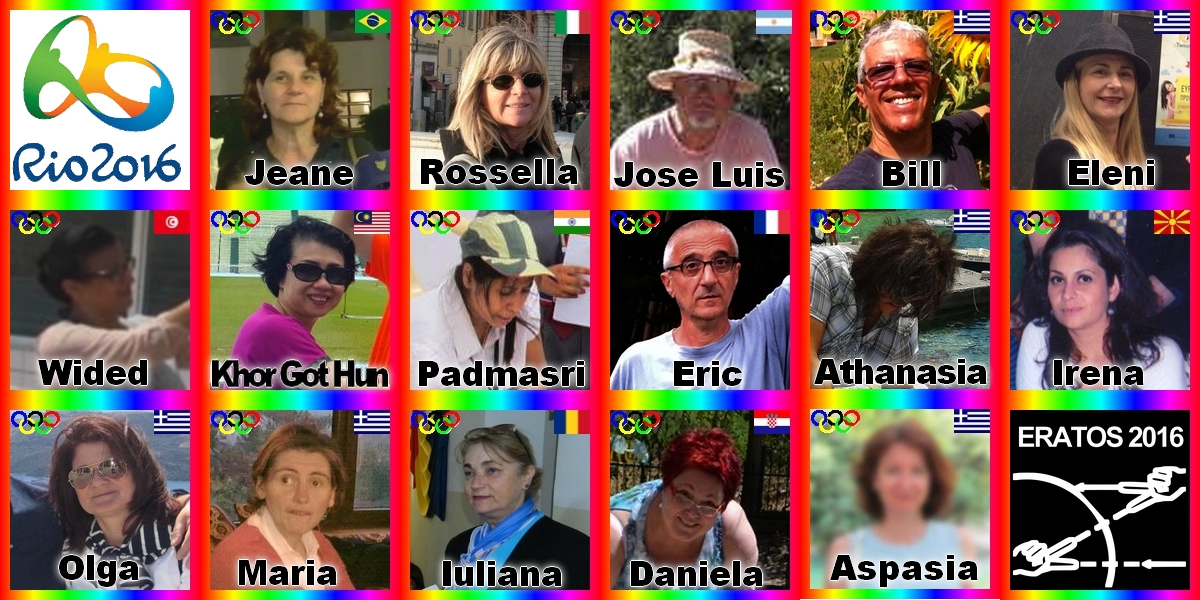
From 5 to 21 august, during the olympic games, 16 teachers made measures to celebrate the Olympic games in:
Rio de Janeiro Olympic park,
Ancient Olympia,
Ancient Messene stadium,
Konstantinos Tsiklitiras museum,
Olympic stadium of Rades,
Aldemar Olympian Village in Skafidia,
Olympic Rowing Center of Schinias …
This holiday activity, without any students was the way to keep in touch, and welcome a new teacher (Irena) from FYROM.
All olympic gnomons and results in august page.
Rio de Janeiro (Jeane de Fatima)
The billboards and the traffic cones of the Olympic park in Rio de Janeiro were used as gnomons
Ancient Olympia (Athanasia Zafeiropoulou)
Olympia is located in the west of the Peloponnese. Imposing temples, votive monuments and treasures stood alongside the palaestra and gymnasium in a site of unique natural beauty and mystique. From the beginning of the 10th century BC, Olympia was a meeting place for religious and political activities. At the centre rose the majestic temples of Zeus and Hera. The Stadium, which one entered through the Portico of Echo, could hold thousands of spectators. Additional constructions were built in the area until the 4th century BC to serve as premises for training and accommodation
Mythology
It is difficult to know the exact reasons behind the birth of the Games. Mythology gets mixed up with history and often the events which happened at this time are explained as consequences of the gods’ intervention. There are many stories which attempt to explain their origin. According to the oldest myth, the Olympic Games were the invention of Heracles of Ida, one of the Daktylos. According to other myths, the Games were instituted by Zeus himself, in memory of his battle with Kronos. Others attribute the founding of the Games to the demigod Heracles, who organised them in Olympia to honour Zeus, after his victorious expedition against Augias, King of Elis. The ancient Olympic Games were celebrated in honour of Zeus. They were secular in nature and aimed to demonstrate the physical qualities and evolution of performances accomplished by young men, as well as to make good relations prevail between the Greek cities. According to specialists, the ancient Olympic Games owed their purity and importance to religion.
Modern Olympia and Olympic games
The Olympic flame of the modern-day Olympic Games is lit by reflection of sunlight in a parabolic mirror in front of the Temple of Hera and then transported by a torch to the place where the games are held. When the modern Olympics came to Athens in 2004, the men's and women's shot put competition was held at the restored Olympia stadium
Konstantinos Tsiklitiras museum (Olga Keramida)
Konstantinos Tsiklitiras, was a popular Greek athlete who rose to fame by winning a gold medal in the standing long jump at the 1912 Stockholm Olympics. He won one gold medal, two silver medals and one bronze medal in his Olympic career. Apart from winning a gold medal and bronze medal (in standing high jump) in the Stockholm Olympic Games, he also participated in the standing long jump and standing high jump at the 1908 London Olympics and won silver medal in both the events. Konstantinos was a member of the Panhellenic Gymnastic Society where he practiced as a track and field athlete. He became Greek champion 19 times. His career ended abruptly when he volunteered for fighting in the Balkan Wars. Even though he could avoid conscription in the war, yet he insisted on participating in it for his country. During the war, he contracted meningitis and died at the age of twenty four. His original family home in Pylos has now been converted to a museum and is adorned by his lofty marble statue